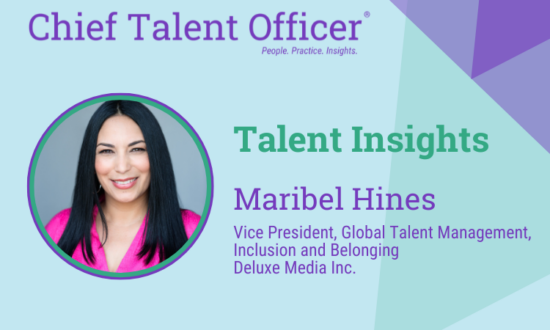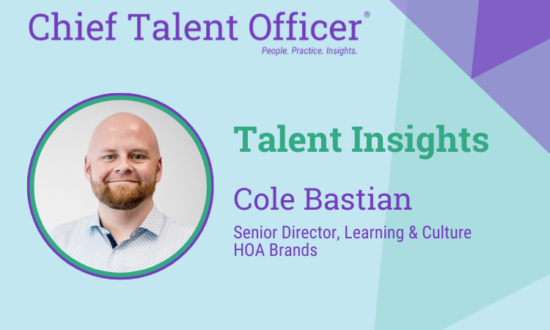“What’s in it for me?”
That’s the million dollar question your employees are asking before they engage with the development opportunities you’ve spent countless hours creating.
To encourage lifelong learning from the employees we support, we have to show our own willingness to engage with upskilling and reskilling on a continuous basis. However, after engaging in numerous conversations with my colleagues in recent months as we put together our inaugural institutional learning and development framework launching this spring, what shocked me the most was that some employees interpreted the need for upskilling or reskilling as something negative — essentially, they felt those terms implied they were not able to perform their current jobs effectively or were not qualified for their positions.
The communications, the language, the perception of the terminology we use to encourage learning — I’ve realized these are an important piece of the puzzle in terms of willingness to engage and assessing need for readiness for development.
One of the foundational things learning and talent management professionals can do to proactively address any potential resistance or negative response to terms like upskilling or reskilling is to educate our employees on the fact that upskilling and reskilling are opportunities and not punitive in any fashion. It’s important to share that the investment of time, effort and financial resources to bring development opportunities to employees is one piece of how organizations show they care about employees’ long-term growth, engagement, satisfaction, success and retention.
It also may be helpful to survey employees and leaders to analyze the top skills development areas they feel are needed or that would be helpful for both performance and career mobility within the organization. You can then use that data in subsequent communications and information sharing regarding the need for these development programs and pathways.
I’ve found that the more we use the terms upskilling and reskilling in regular conversations around training, learning, development, performance and workplace topics in general, plus the more we continuously clarify the benefits of upskilling and reskilling, the less averse employees tend to be to the terminology and the more interested they become in what’s in it for them and what the potential benefits may be for them in both the short and long term.
Introducing development advocates and peer-recommended skills development can also be particularly helpful and go a long way toward gaining employee buy-in and interest in your suite of offerings. Consider including a highlighted area on your employee intranet or website that showcases peer-recommended upskilling or reskilling so that others can hear or read those employee testimonials and see their colleagues engaging positively with development — this can spark contemplation such as, “If Sue completed that Pivot table training and she’s one of the top employees here, I wonder how I might benefit from the same training?”
I’ve heard from some folks that they felt “reskilling” meant they were perceived as a low performer or showed inadequacies or deficits in their education and experience.
Continuously reminding employees and having leadership reinforce from the top down that skills development is a positive opportunity to learn new skills or even new ways of completing routine work also can be very impactful. Recording short video testimonials that allow employees to discuss the benefits they found from participating in skills development and showcase how they use the skills on the job can be rewarding for those who have engaged in the training and also help other employees see opportunities for themselves to develop.
Reskilling can be an even more sensitive term for some people than upskilling, which implies learning new and additional skills for their tool kits. I’ve heard from some folks that they felt reskilling meant they were perceived as a low performer or showed inadequacies or deficits in their education and experience.
This presents an opportunity for talent professionals to educate team members around the benefits of reskilling, showcasing examples from their own experience or from within an employee’s team — for instance, perhaps someone has been doing a routine task daily for years, but going back to the basics or benchmarking how a colleague performs the same task may lead to uncovering efficiencies in process or learning new tools and technologies available to help complete the task more effectively.
Reskilling is also helpful when it comes to reinforcing the importance of cross-training and bench strength on teams or within organizations. For employees who learn certain skills or routines early on in their jobs but don’t do them day to day, it is easy to forget procedures or nuances of tasks that those who complete them regularly find second nature. Cross-training to allow for colleague-to-colleague reskilling not only aids in skill development and competency building but also provides enhanced confidence and may encourage employees to pursue additional learning. It also works to prevent silos and prepare for contingency and succession plans.
You may consider asking employees what they know about the terms upskilling and reskilling and how they perceive those terms as you plan for education and communication regarding your organization’s development opportunities. Providing leadership with talking points and FAQs on how to best address questions or resistance to the terms themselves, to help employees overcome any negative feelings toward the terminology and to encourage them to engage in learning may also be helpful. Aligning terminology with tools and resources such as professional development plans, goal-setting frameworks, behavior anchor rating scales and performance review ratings also ensures continuity with the language being used and over time will assist with employees not only better understanding the positive impact of upskilling and reskilling but actively looking to engage in these programs!















